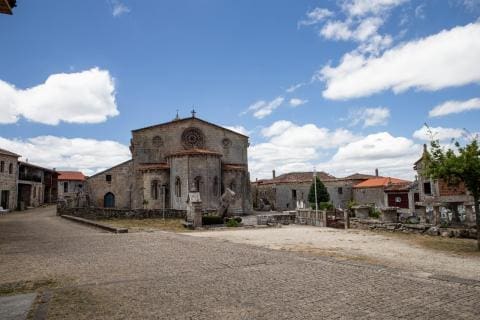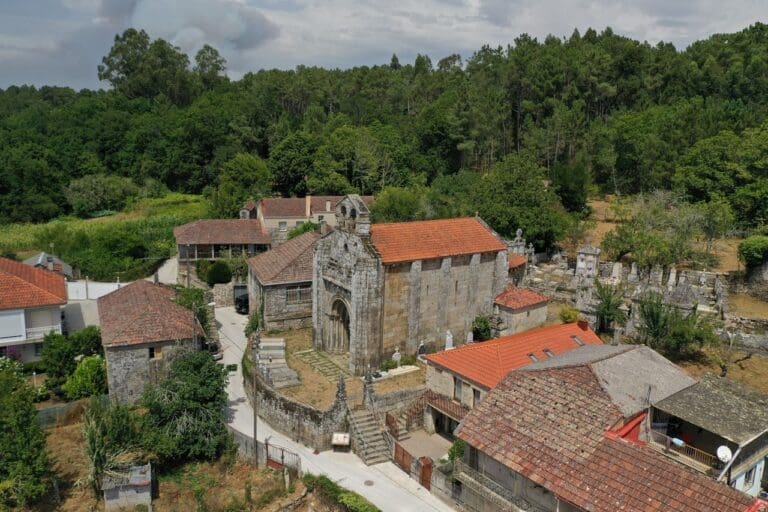Santa Mariña de Aguas Santas is an attractive, historical, artistic, and tranquil ensemble that blends history, tradition, and culture. We will take a brief walk through the village of Santa Mariña de Aguas Santas to see its church and urban center. Here begins a route of about 2 kilometers in length and of low difficulty that runs through places related to the coast of Santa Mariña. A spectacular environment of native forest where the Cal Támín runs alongside the Camino de Santiago. The most mysterious and interesting point of this route is the Forno da Santa, which is located in the unfinished Basilica of the Ascension. To understand the reason for the construction of this church, it is necessary to know the legend of Aguas Santas. Armeá was a Gallo-Roman town located near the current sanctuary of Aguas Benditas. When Olibrio, a Roman prefect, was flirting with Mariña, an orphaned shepherdess, he fell madly in love with her, but was not reciprocated. Faced with her resistance and refusal to abandon her Christian faith, Nova Mariña suffered numerous martyrdoms at the hands of her devoted prefect, but none managed to change the opinion of this saint who, moreover, miraculously, after three days was completely healed of all calamities. It is said that there was a temple before the 8th or 9th century, where the tomb of the saint was discovered, and upon which the mausoleum of the Holy Chamber was built, which is now inside the church. At the place where she was beheaded by a Roman prefect, a 12th-century Romanesque church was built, consisting of three naves and a false triforium, similar to the monastery neighborhoods of Xunqueira de Ambiá and Aciveiro. These naves are separated by pillars with attached columns. The triumphal arch is slightly pointed. At the top of each nave, there is a rose window that illuminates the church. Ancient arches and fascias support the roof, which was once stone but is now wood. The tower, where there is a clock and a bell tower, and the towers of the side streets, are Baroque, from the 18th century. CASTRO DE ARMÁ Also known as Cibdá de Armeá, it is located near the sanctuary dedicated to the saint of Santa Mariña de Aguas Santas in the town of Allariz, in the Allariz-Maceda region (Ourense). At that time, it was a castro city with two delimited areas: one, the highest area at the top, formed by the Galician castro town, and the other, the northwest terraces, formed by an urban network with paved roads, sanitation networks, etc. Rainwater drainage channels, circular houses with two floors, porticoed patios, and masonry. Thus, a small rural Roman city was formed in Gallaecia in the 2nd century AD. Castro de Armea was an oval construction, 4.8 hectares in size and surrounded by a 4-meter-high defensive wall. Its interior was not the urbanized part of the agricultural and rural village where they lived in the 4th century. Among the remains excavated in the different cement excavation campaigns, the object of ‘The Alaricano Warrior’, collected in the Archaeological Museum of Ourense, stands out.




 Province of Ourense, Galicia
Province of Ourense, Galicia





